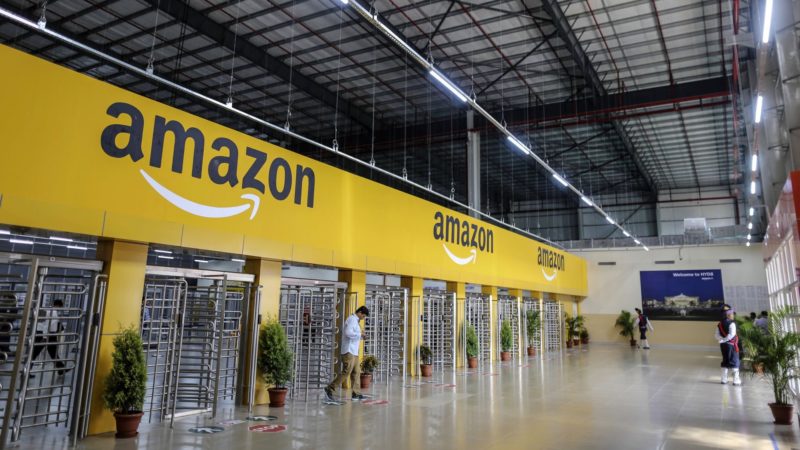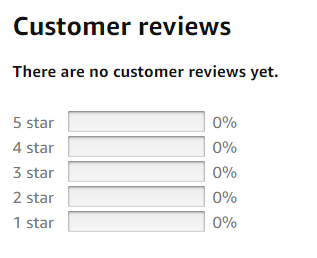Product & Lifestyle Photography for E-commerce
Top 5 Mistakes FBA Sellers NEED to Avoid
If you’re thinking about putting on the Amazon FBA Seller suit, this PSA is for you! Many sophisticated aspects go into starting and maintaining a successful ecommerce business. Difficulties that wouldn’t plague a normal retailer are the root cause of catastrophe for an ecommerce brand. Risk of failure is high, and the pressure to succeed is even higher. Too often sellers begin a brand with a ‘get rich quick’ type of mentality. Instead, ecommerce undertakings should be carefully articulated, strategized, and planned out the same way any other business venture would be. Seemingly insignificant pieces to the puzzle make a huge difference when it comes to profit. Navigating the ecommerce world is tricky, and utilizing FBA to sell on Amazon’s platform can turn even more complicated. Luckily, there are a few common mistakes to avoid, to keep you ahead of the learning curve.
Don’t fall victim to these mistakes if you want your brand to be successful:
Thinking Short Term, When You Should Be Thinking Long Term
Newbie FBA sellers, the cliché is out there for a reason—shortcuts truly don’t work! Long term branding and marketing investments should be applied early. Always considering the bigger picture will train your perspective to maintain long-term. Many projects should be implemented early on for your brand to achieve its long term goals, as well as immediate. In fact, even your goals should be carefully constructed.
Keep your goals SMART:
S – Specific – Narrow down your objective as much as possible, and it will stay easier to accomplish.
M – Measurable – Make sure the results of your goal can be measured. There’s no point in collecting data that can’t be adjusted in the future, right?
A – Actionable – Will you be able to take actual steps towards meeting your goal?
R – Realistic – Are you both willing AND able to meet your goal?
Stay as rational and unbiased as you can when creating your goals. Working towards the unattainable will only set you up for disappointment and failure.
T – Time bound – When do you want this goal to be accomplished?
Remember, this means short term, and long term goals.
It’s easy to get caught up, and put other “less important” aspects on the back burner. However, your marketing strategy including: branding, positioning, and social media presence is a high priority. If marketing isn’t your expertise, consider hiring an educated professional to join your team, or outsourcing some of the work.
Fortunately, many Amazon FBA seller resources are available to help ease some of the initial burden. Learn more about the expertise involved in our services here, and keep your goals on a long term track. Remember, with the Private Label Nitrous Seller Central management team on your side, you’re already two steps ahead of the competition.
Lack of Funding & A Long Term Financial Plan
One of the first hurdles in any business venture, but especially in ecommerce, is obtaining funding. Decide which source works best for your business strategy, and implement a plan to secure the funding. Again, think long-term. If you run out of cash or lose your liquidity at the wrong moment, it may just be enough to sink your brand.
Where am I getting the money to start this business? (Source of Funding)
Equity
Venture capital: Venture capital firms provide a type of private equity financing to small, early-stage, emerging businesses that are deemed to have high growth potential, or which have demonstrated high growth.
When entering into these types of discussions, it’s best to keep an open mind regarding value of your company (brand.) Not being realistic about financial situations may deter potential investors, and venture capitalists from investing in your idea. Instead, try being armed with future long-term projections based on real data.
Angel Investors: Since venture capital firms nearly always require some proof-in-the-pudding, a startup ecommerce brand will almost always be starting at more local level and pitching to investors that may be willing to take a higher risk with their own money that is not part of an institution. Angel investor groups are out there – do some research in your area to find out how you can present your business plan to them so that you might have a shot at picking up the right investor to back your team.
Remember, people invest in people – not in products or ideas – so get your game face on and get after the right investment. Who knows, if you can’t get anyone to buy into your company, maybe you dodging a bullet – instead of launching a poorly conceived brand in which others will not invest. That might be an indication that you’d be better off going back to the drawing board.
Debt
Loans from: friends / family, banks, or SBA business loans
Each form of debt will hold its own benefits, and downfalls. Keep in mind interest, re-payment schedule, approval process, and amount you want to borrow when making your decision.
Crowdfunding
An alternative form of funding can assist ecommerce businesses with a passionate following to develop new products and raise money. If you run a successful campaign, you raise funds by giving supporters “perks.” Perks could include exclusive promotions, merchandise, deals etc. Want to learn more about this modern financing option? Check out this in-depth crowdfunding guide.
This form of funding can also be used initially too, but a great emphasis will then need to be placed on then building your following. This can be down thorough social media presence and other campaigns to attract the right interested individuals who ideally with then become “supporters” of your financial campaign.
How am I investing my money once I’ve started this business? (Financial Plan)

A basic understanding of finance is necessary for any business owner. Again, if you’re clueless—hire outside for help. No shame in the game, and it’s absolutely worth it in the end to avoid detrimental mistakes.
However, if you think you’re in a good place financially, keep the following in mind:
Cash flow, or the movement of money into and out of a business, is extremely important – especially in the world of marketplaces, sales rank, and placement momentum. It’s easy to fall into a bad spot financially when you don’t have enough cash to keep operating – if that happens while selling on Amazon, the inability to re-order enough and do it on time can ruin any early gains that were achieved in terms of ranking and organic exposure.
To avoid cash-flow problems, spread out expenses so everything isn’t due at once. Look for the opportunity to pay for inventory on terms of 30, 60, or 90 days. Additionally, investing all your cash in inventory, and overstocking kills profitability due to Amazon’s long term storage fees. This also leaves no room for a marketing budget. Without marketing, your business will remain stagnant. Also, try not to over invest in advertising or optimization gurus that may not be worth the money. Instead always reinvest based on actual revenue, rather than unproven projected sales.
Funding and financial goals aren’t the most exciting part of becoming an FBA seller, however, they are significant. Setting yourself up for financial success in the beginning will lessen the stress that later comes with ordering more inventory, investing in marketing, or deciding on new product directions. Don’t break the bank all at once, and have to throw in the towel before your brand really takes off! Start in a good financial spot, and try your best to stay in one.
Making Assumptions About Demand
You know what they say about assumptions…
New FBA sellers often get overzealous and completely forget principles. Don’t lose sight of the important analysis aspects of the job. Demand for products is one thing that should never be assumed. Don’t fall in love with your niche and play a guessing game about how well that niche will perform. Research should be conducted for each specific product even if they fit into the same category. Plus, well performing complimentary products, again, do not represent a correlation to the potential of yours.
Consider hedging against risk by looking for the opportunity to pay for inventory for short period batches. Look for suppliers who offer low minimum order quantity (MOQ) products. Ordering higher MOQs should only be based off of tested analysis of the product first. The products available in low MOQs can be introduced into your brand slowly to see if it’ll take off. If they don’t, the low inventory will save you the later trouble of having to destroy any products that just won’t sell. This strategy again also minimizes the risk of having to pay long term storage fees for products that aren’t moving well.
Related, prior research and differentiation is a must for launching a private label brand via Amazon. Recognizing a good product opportunity is the first step. Although, just because demand for a product is high now, doesn’t mean it will stay high. That’s why it’s desirable to instead focus on trends, and differentiating your product. Your private label brand will have a hard time being successful if it’s identical to every other generic. Building a brand requires time and creation of a long term asset that will be recognized in the future. Once consumers realize your brand represents something of value, traffic from competing products can be redirected to yours.
research + unique value proposition + quality products = selling success on Amazon
FBA Seller Suggestion: When using software that indicates competing products are doing well, do not assume that will be your situation. In fact, the opposite may be true. For a variety of potential reasons, sometimes if you launch a better offer against an incumbent listing, you’ll still lose. Amazon’s algorithm and competitor’s black hat tactics to kill off new entrants often work hand in hand. New listings that may climb in popularity are not a welcome thing.
Overstocking That Kills FBA Profitability
 As you might have guessed, making assumptions without supporting evidence about demand can lead to the process of overstocking. Why is overstocking bad you wonder? Wouldn’t it be better to have too much of a product, rather than not have enough? Well, yes and no. Successful inventory management tends to be one of the most common problems new sellers will face. Yes, a scenario where you don’t order enough inventory and you run out isn’t ideal. You might lose out on the opportunity to fulfill orders (hard to quantify) or rankings on Amazon (Amazon has been known to completely ghost listings when inventory runs out. Meaning, even if your product is completely relevant to the customer’s search, it won’t appear at all) On the flipside, overstocking completely ruins profitability in a very real way.
As you might have guessed, making assumptions without supporting evidence about demand can lead to the process of overstocking. Why is overstocking bad you wonder? Wouldn’t it be better to have too much of a product, rather than not have enough? Well, yes and no. Successful inventory management tends to be one of the most common problems new sellers will face. Yes, a scenario where you don’t order enough inventory and you run out isn’t ideal. You might lose out on the opportunity to fulfill orders (hard to quantify) or rankings on Amazon (Amazon has been known to completely ghost listings when inventory runs out. Meaning, even if your product is completely relevant to the customer’s search, it won’t appear at all) On the flipside, overstocking completely ruins profitability in a very real way.
Let’s consider Amazon’s Long Term Storage Fees (LTSF) On February 15th and August 15th of every year, Amazon cleans their warehouses so to speak. On these dates, inventory that has been in Amazon fulfillment centers for longer than six months is assessed one of two fees:
-For inventory that has been warehoused by Amazon between 6-12 months, sellers are assessed a long-term storage fee of $11.25 per cubic foot of space used.
-For items that have been in fulfillment centers for 12 months or more, sellers are assessed a long-term storage fee of $22.50 per cubic foot of storage.
**Keep in mind, these semi-annual long-term storage fees are different from monthly storage fees, and added to them.**
Turning over your inventory quickly becomes an incentive to avoiding these policies. In a way, this practice actually benefits all FBA sellers. It acts as a way to drive effective inventory management, and really scrutinize reports when ordering from your supplier.
Given all of this, if you still find yourself being held accountable to these fees twice a year, it may be time to call in the pros. Our full service management solutions at Private Label Nitrous take into account all of Amazon’s policies. Our standard operating procedures are built from the ground up, in a way to ensures the smartest inventory management decisions are made. In turn, this translates to your brand remaining as profitable as possible.
Advertising Products That Have Zero Reviews
Amazon Sponsored Ads can be a tricky aspect to manage for a new seller. Especially when there’s so much else taking up your time. As a rule of thumb, advertising items that have zero reviews isn’t a good idea. We know you want those items to sell, and isn’t that what the purpose of advertising is? Yes. BUT, and this is a very big but, Amazon is its own separate world. Products with zero reviews don’t have a substantial opportunity to catch on, regardless of how much you’re spending. Your ads may gain impressions on the product, but without a review, it’s not going to convert. Focus on gaining reviews before advertising in this situation.
Overall, don’t bother to advertise products with zero reviews. You’ll spend more money, and time trying to analyze which keywords aren’t working than it’s worth. All things equal, there’s no reason to worry about optimization issues when a listing has no reviews. Find a way to get that first review – even one review will make a difference.
Takeaway
Wherever you are in your FBA selling journey, these tips will save you a lot of hassle. New sellers: avoid these mistakes at all costs, and learn from veteran FBA sellers and consultants. Keep in mind your long term goals, funding, and product demand before you begin. During your selling experience don’t fall into the habit of overstocking or wasting your advertising efforts on products with zero reviews. There’s a thin line between a successful and unsuccessful brand. Recognizing and steering clear of these basic mistakes will at least give your private label brand a hope and prayer of success!


